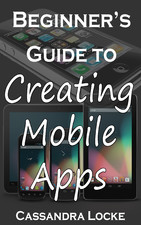The HBCU Money™ staff also adds some commentary to the subjects of Mr. Buffett’s quotes to provide more depth and better understand the points.
- EARNINGS: There are three different types of income. Earned, passive, and investment income. Guess which is taxed the highest? The one you go to work for. Passive income (e.g. rental property, limited partnerships, intellectual property) if properly managed can be taxed at near zero income. Investment income (e.g. dividends from stock ownership) falls under 0, 15, or 20 percent based on taxable income. More importantly, these incomes are not based on you leaving the house or your boss liking you.
- SPENDING: It is not how much you make, but what you do with what you make. There is nothing wrong with having nice things, however, in an era where people do things to project a social media lifestyle, keeping up with the Joneses, Smiths, and everyone else has become even more problematic. Use personal finance tools like Mint.com or others to help you track your spending and give yourself a grade on a month by month basis.
- SAVINGS: Why is it so hard? Wages have been flat for a long time that is for sure, but we must play the hand we are dealt. The question is does pride get in the way of many people saving. Most people’s biggest expense is housing, yet how many are willing to take on a roommate or two for a year or two to save? Saving must become a habit that can start small and snowball with time with discipline. Find a friend and compete with them if that helps, but find the thing that pushes your button to do it.
- RISKS: Are you 50/50 about a coming raise and decide to buy that car you always wanted or put that foreign vacation on the credit card? Then you just failed at risk management. Risk is always about understanding the pros and cons of any financial decision and finding ways to mitigate that risk. You bought the car? Okay, so you Uber and add extra income until you get the raise. If you do not, then keep Ubering. Again, risk management is vital to one’s long-term financial planning.
- INVESTMENT: When do you need a financial advisor? When you are rich you say? Think again. The moment you have a job you need a financial advisor and probably not just one. Checks and balances (risk management). Is your only investment account your retirement account? There are multiple financial investments to consider from owning stocks, owning a stake in a small business, to even owning land. All of these make up the ingredients that is your financial pie. How one distributes them is up to your own risk tolerance, but you have never eaten an apple pie using only apples. No one thing is going to make you wealthy or preserve it.
- EXPECTATION: This is something that we must reflect on within ourselves and from those around us. We expect to be wealthy, but is our behavior matching it? Are we surrounding ourselves with likeminded people in our pursuits? We can not expect to be financially sound and surrounded by those who want to go to the mall every weekend. Are we patient with our investments? Or do we chase “get rich quickly” schemes because we have not educated ourselves properly to have the proper expectation of savings, budgeting, investing, and the TIME it takes to accomplish those goals.
Need in depth help on all of the above?
Watch this staff recommended Youtube video by Dan Griffin, CPA entitled “Saving & Investing Basics: A Guide for Young Adults” here.
Be sure to also read HBCU Money’s “Recommending Reading for African American Financial Starters” here.






